<< Our Photo Pages >> Bahia Wulaia Dome Middens - Ancient Village or Settlement in Chile
Submitted by C_Michael_Hogan on Friday, 04 April 2008 Page Views: 65780
Multi-periodSite Name: Bahia Wulaia Dome Middens Alternative Name: Wulaia Cove MiddensCountry: Chile
NOTE: This site is 1447.602 km away from the location you searched for.
Type: Ancient Village or Settlement
Nearest Town: Ushuaia, Argentina
Latitude: 55.04755S Longitude: 68.14835W
Condition:
| 5 | Perfect |
| 4 | Almost Perfect |
| 3 | Reasonable but with some damage |
| 2 | Ruined but still recognisable as an ancient site |
| 1 | Pretty much destroyed, possibly visible as crop marks |
| 0 | No data. |
| -1 | Completely destroyed |
| 5 | Superb |
| 4 | Good |
| 3 | Ordinary |
| 2 | Not Good |
| 1 | Awful |
| 0 | No data. |
| 5 | Can be driven to, probably with disabled access |
| 4 | Short walk on a footpath |
| 3 | Requiring a bit more of a walk |
| 2 | A long walk |
| 1 | In the middle of nowhere, a nightmare to find |
| 0 | No data. |
| 5 | co-ordinates taken by GPS or official recorded co-ordinates |
| 4 | co-ordinates scaled from a detailed map |
| 3 | co-ordinates scaled from a bad map |
| 2 | co-ordinates of the nearest village |
| 1 | co-ordinates of the nearest town |
| 0 | no data |
Internal Links:
External Links:
I have visited· I would like to visit
C_Michael_Hogan has visited here
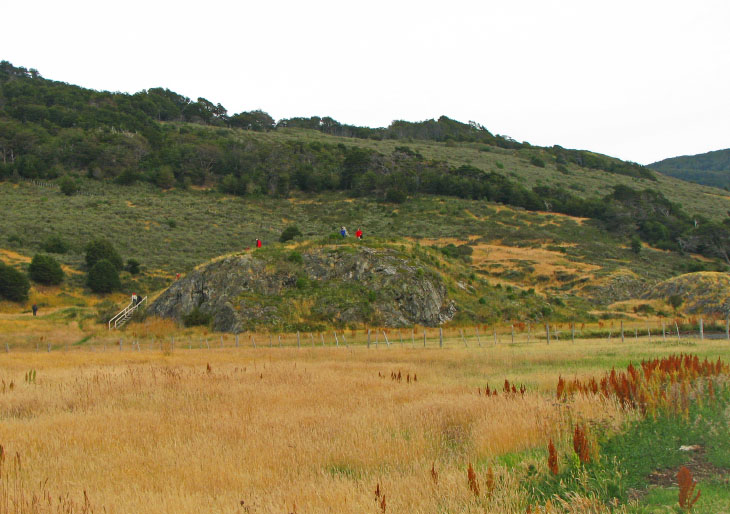
The Bahia Wulaia Dome Middens is a prehistoric mesolithic seasonal habitation site of the Yaghan people situated on Isla Navarino along the Beagle Channel in the Patagonian Archipelago region of Chile. Here naked native women swam roughly 10,000 years ago in the bay waters to harvest shellfish. This village was constructed on the leeward side of a prominent dome-shaped metamorphic outcrop along a protected inner shore of Bahia Wulaia, and consists of a series of ring middens, each of which surrounds a central hut site. Contact with aboriginal Yaghans was made by Charles Darwin and Vice-Admiral FitzRoy at this site in 1831.
PREHISTORIC SETTLEMENT. The Yaghan people are an indigenous nomadic tribe of Patagonia, who extended their settlement southward from the South American continental mainland using an ice bridge onto the large southern island of Tierra del Fuego likely in the early Holocene, when the Darwin Icefield of the Tierra del Fuegan archipelago had significantly melted, but prior to the ultimate retreat approximately 12,000 to 10,000 years ago (Coronatoa, 1999) of the glacier that connected the mainland to Tierra del Fuego. There is considerable evidence (Lowie, 1940) that the earliest advanced civilisations in the Americas derived from Yaghans and other South American tribes. Note, for example, that Navarino Island is thought to embody the highest density of archaological sites of any location on the earth. (Lindemann, 2008)
After colonizing much of coastal Tierra del Fuego, the canoe-adept Yaghans easily reached neighboring islands, prominently Isla Navarino, whose coastal terraces are rich with early to mid Holocene archaeological remains. The low prehistoric density of human settlement is similar to circumstances I have noted regarding population densities on the Patagonian mainland steppes, (Hogan, 2008) such that Yaghans on Isla Navarino had no competitive need for highly specialized exploitation; rather it is expected and found in the archaeological record that diets included shellfish, marine mammals and vegetable matter. It should be observed that the great number of archaeological sites on Isla Navarino is likely due to the nomadic nature of the Yaghans and the lack of historical disturbance by Europeans, rather than an indicator of prehistoric population density.
MIDDEN ARCHITECTURE. The ring middens evolved over centuries of habitation, with original construction of the family habitations being founded on small terraces on the leeward side of the metamorphic outcrop, some of whose soil still clung to the leeward side in the early Holocene. The Yaghans were known to construct a conical hut, which would have been situated on one of these terraces. Over time shells, bone and other domestic refuse were discarded from the hut and created a ring shaped landform surrounding the hut, which gained further protection from winds.
The midden material was quite evident at the top of each ring, with some of the shells in remarkable preservation, likely resulting from the slight visitation to this remote site. The midden soil was much darker in color than the native coastal terrace soil, implying some admixture of charcoal residues in the midden mix.
ENVIRONMENT. Shallow Wulaia Bay not only offered Yaghans protection from bitter winds, but invited them to a continuous seafood buffet. The presence of Coihue, Conejos, Aguila and several smaller skerries within the bay offers further buffering and complex fractal niches encouraging a diversity of shellfish. The view across Wulaia Bay illustrates the shallow bay is veritably clogged with islets. The bay itself varies today from intertidal pools scarcely a meter in depth to a maximum depth of approximately 17 meters according to marine charts. Thus a wide variety of marine habitats are found to support numerous bivalves, marine fishes and even dolphins and sea lions.
The local ecosystem consists of a coastal terrace of scrub and grassland, although the majority of the island is considered part of the Magellanic subpolar forests ecoregion. The current grasses are likely wild remnants of grain species introduced by 19th century European settlers who displaced indigenous peoples and their flora. Approximately 150 meters from the shoreline is a closed canopy Lenga (‘'Nothofagus pumilio'‘) forest that offers a different understory floral palette from the coastal terrace. ‘'Nothofagus betuloides'‘ is also found abundantly in this Magellanic rainforest, with both of these species being used for construction of the original native huts. The Nothofagus forests arose in sub-antarctic Patagonia soon after the last glacial retreat about 12,000 years before present.(Beccaceci, 1998) Edible berries are found on Navarino Island such as ‘'Berberis buxifolia'‘. An important perennial freshwater resource is found in nearby Matanzas Creek, located approximately 180 meters to the north of the dome middens.
Nearby glaciers of the Darwin Icefield north of Navarino Island are in a state of retreat, based on my observations along the Beagle Channel, O'Brien Channel and Seno Almirantazgo. I collected data by tree-line measurement, Nothofagus forest regrowth ages after glacial retreat, historic photographs, observations of glacial moraine debris and interviews with local guides. Remarkably the rate of recession is much higher than I expected from literature review prior to my 2008 visit of this region. In some cases, such as Pia Glacier, recession rates of hundreds of meters per year sustained over the last several decades can be traced. Other prominent glaciers in retreat are the Francia Glacier, Italia Glacier, Alemania Glacier and Holanda Glacier. Even the Marinelli Glacier, judged by some to be stable until recently, is showing signs of retreat based upon nunatak exposure photos from 2000 to 2008.
FISH TRAPS. Prehistoric fish traps are extant today in the form of linear rock fences in the shallow intertidal area. Typically these rock fences are constructed to block a narrow inlet, such that fish entering the inlet at high tide are blocked from return to the sea at low tide. While this type of construction is not uncommon in the ancient world, the degree of preservation of these fish traps is remarkable, but can be explained by (i) low modern visitation to this remote locale, (ii) likely use of these traps by Yaghans until the mid 19th century and (iii) a bay well protected from wave surge.
CULTURE. In the Yaghan culture at Wulaia Bay, women were assessed to be superior for the tasks of diving for shellfish and other aquatic activities, presumably because of their greater buoyancy and swimming capability. The women were hence the chief boat-rowers in a culture that relied greatly upon nautical navigation. Both women and men applied blubber and oils from marine mammal kills to their bodies as insulation from the wind and cold. Most remarkably, both sexes did not avail themselves of any clothing in this harsh climate. The Yaghans are the southernmost aboriginal people in the history of the world. The last purebred representative of the Yaghan people is alive today, a woman of approximately ninety years of age.
LOGISTICS. This is not an easy site to access. One will need to book a private boat from the nearest port, Ushuaia, Argentina and travel several hours. The property is under private ownership and thus arrangements will need to be made with the property owner. Finally, the bay is so shallow that a secondary landing craft, such as a zodiak boat will need to be used for final access. This site as well as most of Navarino Island and some of the neighboring islands have been designated as the UNESCO Biosphere Reserve of Cabo del Hornos. Upon arrival one will be amazed to be welcomed into a nearby structure, unattended, but can be unlocked by a representative of the property owner; this is the small Wulaia Bay Archaeological Museum, which ranks as the southernmost museum of any kind in the world.
REFERENCES
* Robert H. Lowie, ‘'American Culture History'‘, American Anthropologist, New Series, Vol. 42, No. 3, Part 1 (Jul. - Sep., 1940), pp. 409-428
* A. Coronatoa, M. Salemmea and J. Rabassa, ‘'Palaeo-environmental conditions during the early peopling of Southernmost South America (Late Glacial-Early Holocene, 14-8 ka B.P.)'‘, Quaternary International, vol 53-54, Mar. 3, 1999
* Monica A. Lindemann (2008) ‘'The Cape Horn Biosphere Reserve: A Cultural History of the Cape Horn Archipelago'‘, University of North Texas
* C.Michael Hogan, ‘'Pali Aike'‘, The Megalithic Portal, ed. Andy Burnham, March 25, 2008
* Marcelo D.Beccaceci (1998) ‘'Natural Patagonia'‘Pangaea Press ISBN 0-9630180-3-5
The above is original work of C.Michael Hogan prepared for the Megalithic Portal. The author is grateful to his Patagonian expedition guide, Francisco Cardenas Marusic, who supplied many valuable insights to this subject.
You may be viewing yesterday's version of this page. To see the most up to date information please register for a free account.
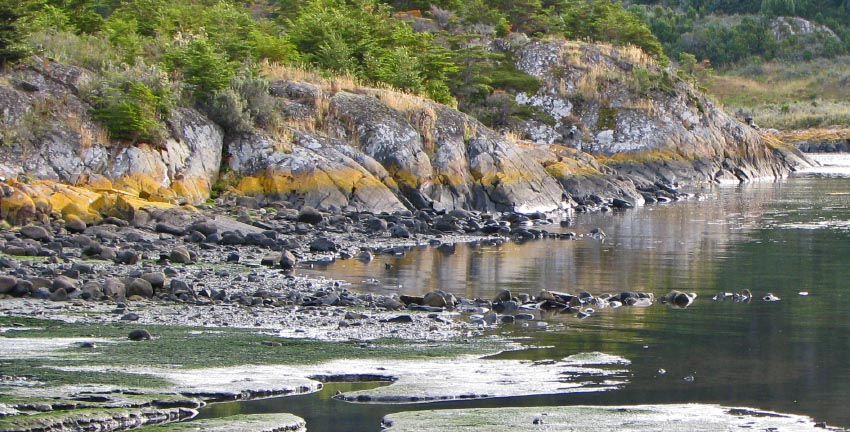
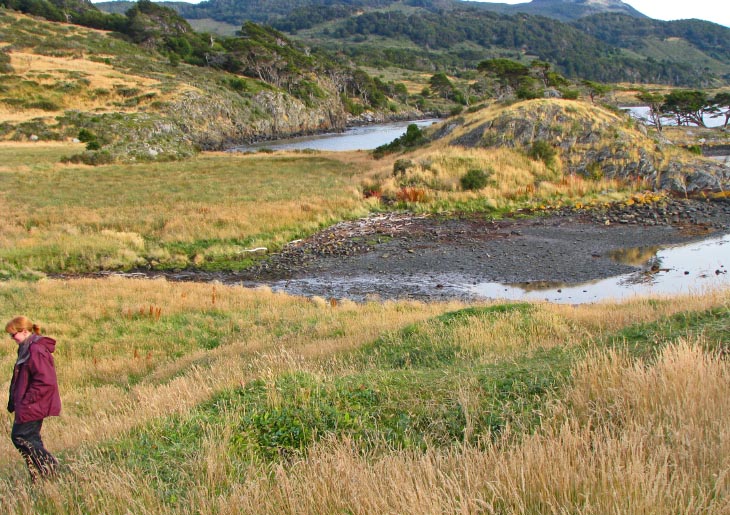
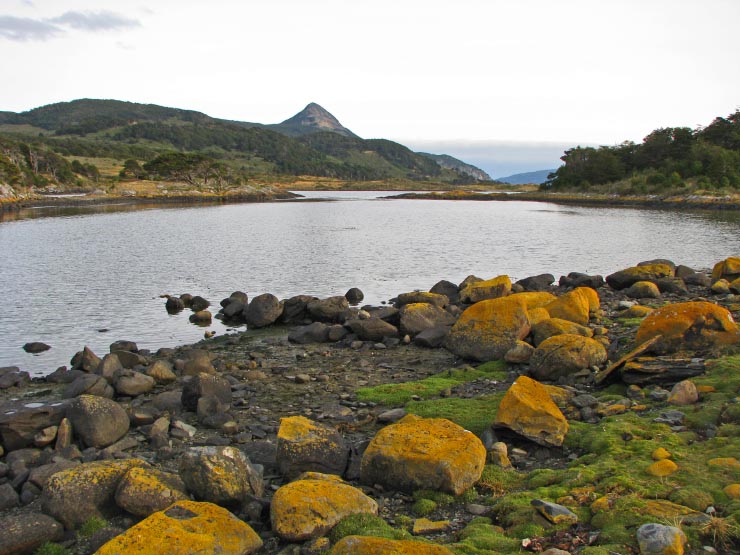
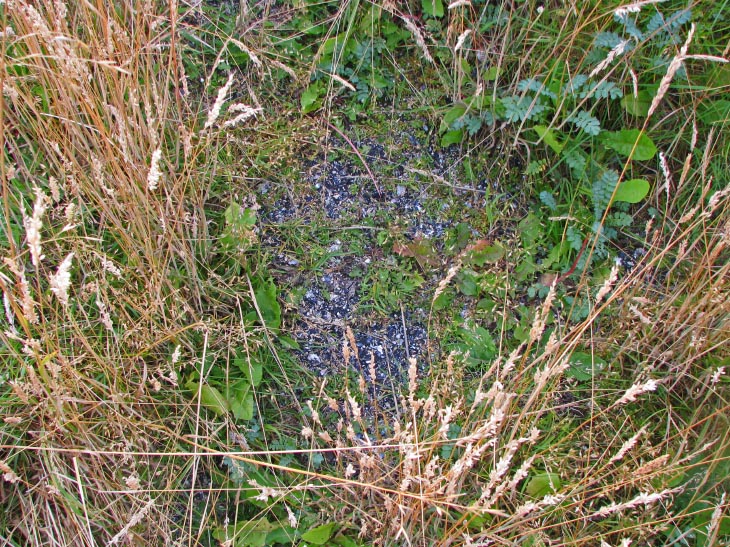

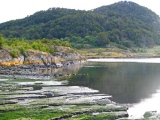
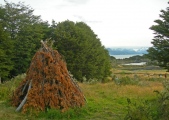
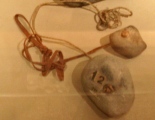
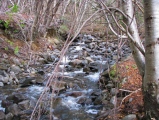
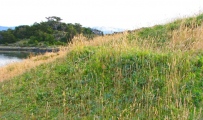
Do not use the above information on other web sites or publications without permission of the contributor.
Click here to see more info for this site
Nearby sites
Click here to view sites on an interactive map of the areaKey: Red: member's photo, Blue: 3rd party photo, Yellow: other image, Green: no photo - please go there and take one, Grey: site destroyed
Download sites to:
KML (Google Earth)
GPX (GPS waypoints)
CSV (Garmin/Navman)
CSV (Excel)
To unlock full downloads you need to sign up as a Contributory Member. Otherwise downloads are limited to 50 sites.
Turn off the page maps and other distractions
Nearby sites listing. In the following links * = Image available
28.6km NNW 340° Museo del Fin del Mundo* Museum
342.4km NNW 342° Pali Aike Cave or Rock Shelter
468.7km NW 320° Museo Histórico Municipalidad Natales* Museum
487.8km NW 321° Cueva del Milodon Cave or Rock Shelter
594.7km NNW 331° Punta Walichu* Cave or Rock Shelter
894.7km NNW 348° Cueva de las Manos Cave or Rock Shelter
968.8km NNW 340° Sendero Los Fosiles* Museum
1550.8km NNW 344° Monte Verde* Ancient Village or Settlement
1650.8km NNW 345° Pilauco Ancient Village or Settlement
2373.3km NNE 24° La Plata Museum Museum
2409.3km N 354° Parque Almagro* Modern Stone Circle etc
2410.6km N 354° Museo Nacional de Historia Natural, MNHN* Museum
2410.7km N 354° Museo Chileno de Arte Precolombino de Santiago de Chile* Museum
2553.5km NNE 25° Localidad Rupestre de Chamangá Rock Art
2563.0km N 353° Los petroglifos Tilama* Rock Art
2719.1km N 353° Valle del Encanto* Rock Art
2747.5km N 354° Petroglifos de las Tinajas* Rock Art
2750.3km N 354° Stone house Pichasca* Ancient Village or Settlement
2806.9km N 354° Archaeological Museum of La Serena* Museum
2874.3km N 355° Los petroglifos del Cerro La Silla Rock Art
3043.5km N 2° El Shincal Ancient Village or Settlement
3131.8km N 5° Tafi del Valle* Sculptured Stone
3160.3km N 4° Fuerte Quemado* Ancient Village or Settlement
3169.8km N 4° Museo Pachamama* Museum
3183.0km N 4° Los Quilmes* Ancient Village or Settlement
View more nearby sites and additional images



 We would like to know more about this location. Please feel free to add a brief description and any relevant information in your own language.
We would like to know more about this location. Please feel free to add a brief description and any relevant information in your own language. Wir möchten mehr über diese Stätte erfahren. Bitte zögern Sie nicht, eine kurze Beschreibung und relevante Informationen in Deutsch hinzuzufügen.
Wir möchten mehr über diese Stätte erfahren. Bitte zögern Sie nicht, eine kurze Beschreibung und relevante Informationen in Deutsch hinzuzufügen. Nous aimerions en savoir encore un peu sur les lieux. S'il vous plaît n'hesitez pas à ajouter une courte description et tous les renseignements pertinents dans votre propre langue.
Nous aimerions en savoir encore un peu sur les lieux. S'il vous plaît n'hesitez pas à ajouter une courte description et tous les renseignements pertinents dans votre propre langue. Quisieramos informarnos un poco más de las lugares. No dude en añadir una breve descripción y otros datos relevantes en su propio idioma.
Quisieramos informarnos un poco más de las lugares. No dude en añadir una breve descripción y otros datos relevantes en su propio idioma.